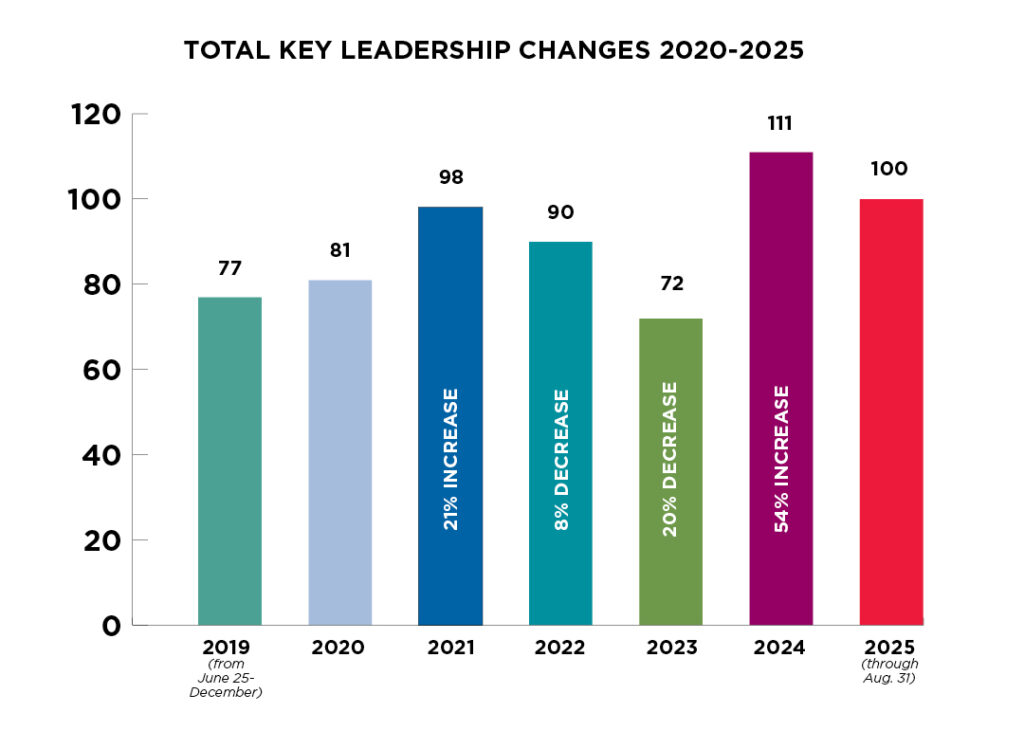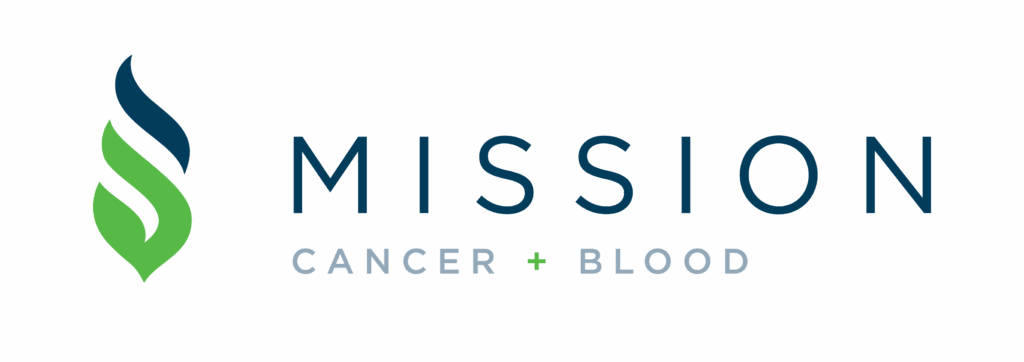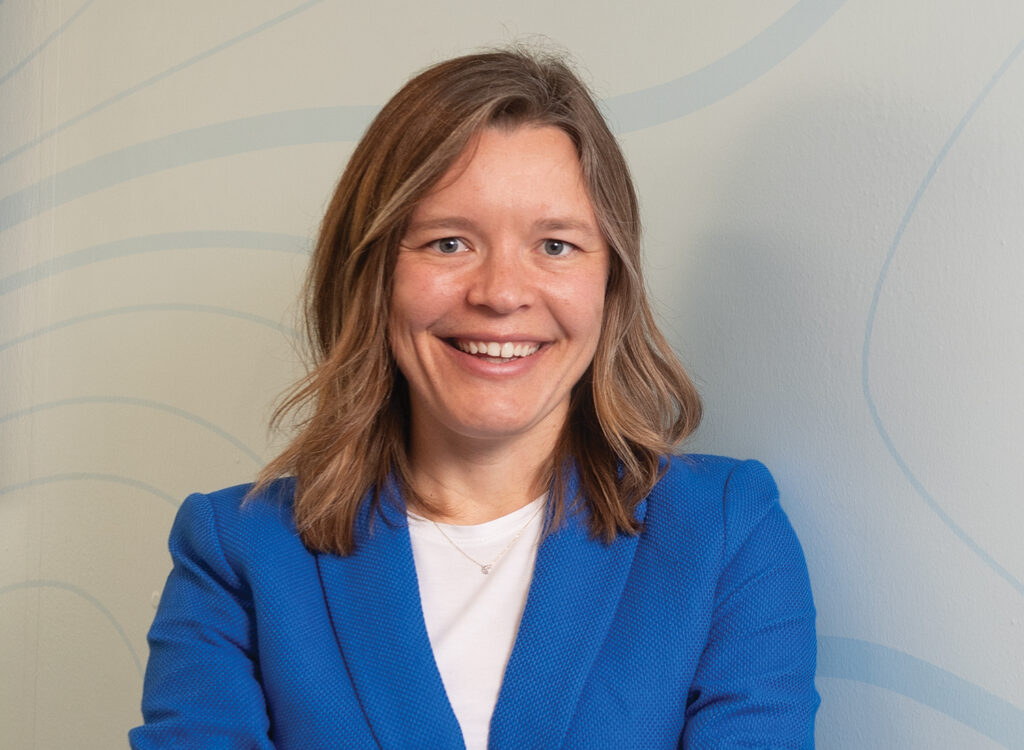Iowa’s health care system stretched — but not broken — by pandemic
‘The genie’s out of the bottle’ for innovating changes in care, leaders say

JOE GARDYASZ Mar 11, 2021 | 2:44 pm
19 min read time
4,609 wordsBusiness Record Insider, Health and Wellness
The need to rapidly respond to the pandemic crisis gave Iowa health care providers unprecedented permission to do things differently over the past year — and will greatly influence decisions about changes to the health system in the future, says Dr. Tom Evans, president and CEO of the Iowa Healthcare Collaborative.
“We accepted that we had to do some things differently,” Evans said. “And I think my lesson is that I’m actually excited about it — I think the genie’s out of the bottle. I think that we as a health care community now have permission to actually innovate and figure out how we construct better care that’s more effective and more cost-effective for our state.”
Evans, whose collaborative has challenged providers to examine and improve health outcomes in Iowa for nearly two decades, was among four health care leaders who took the virtual stage on Feb. 18 for the Business Record’s initial Power Breakfast of 2021. The focus of the virtual forum centered on the past year’s disruptions to the state’s health care system, and what those disruptions will mean for Iowa’s communities and business organizations as they recover from the pandemic.
The panel discussion — held on Zoom and also streamed on Facebook Live, featured:
Suresh Gunasekaran – CEO, University of Iowa Hospitals and Clinics
Mary Sparks Thompson – CEO, Clive Behavioral Health
Dr. Tom Evans – President and CEO, Iowa Healthcare Collaborative
Dr. David Williams – Chief Clinical Officer, UnityPoint Health
Through all the disruptions, Iowa’s health care system demonstrated resilience and the ability to be nimble as rapidly emerging situations required fast responses, the four health leaders said.
Weaknesses in the system were laid bare, however. Disparities in care and the negative consequences of social determinants of health for people of color across the state are of great concern for health professionals. The pandemic has spotlighted these disparities and is driving efforts by health systems to enlist more support from within the communities, particularly to engage more people of color to seek and gain access to care, the panelists said.
Looking ahead, health care organizations in particular are going to have to continue to consider how they will manage the long-term effects of the stress of a pandemic that’s stretching into a second year, the panelists said.
They also grappled with ideas about the best use of telemedicine and other technologies, particularly in rural communities. In many of the logistical and staffing challenges encountered during the pandemic, collaboration within and between communities across the state has been a strength in Iowa in addressing those challenges, the panel observed. Going forward, forming more partnerships will be an important part of improving access and availability of care, the panelists said.
Among other issues discussed:
- Will Iowa’s health care system emerge operationally and financially stronger from the pandemic?
- What sort of lessons are health care leaders taking away from nearly a year working through a siege of infections?
- What types of actions do doctors and hospital administrators hope to see from Iowa business leaders that will help their employees and communities to maintain their health?
Rewatch the event
To rewatch the full panel discussion on demand go to: www.businessrecord.com/video
From your perspective, what is the biggest lesson Iowa’s health care providers should take away from the coronavirus pandemic?
Gunasekaran: This has been really, really difficult and it has really strained the Iowa health care system, but the system did not break. Did we learn a lot? Did we see some weaknesses? Do we need to build some muscle strength in some areas? Absolutely. But let me tell you, the system didn’t break. And the reason the system didn’t break is because we’ve got great institutions, great health care workers and great leadership across the board. I saw success in rural settings. I saw success in urban settings. I saw regions across the state working together. When one hospital was overwhelmed in a region, other hospitals picked up [the slack]. When we needed to move vaccine doses around, we’re moving vaccine doses around. … And so I would say that the state of health care is there are challenges and we have identified weaknesses, but my biggest impression is the collective strength that we do have in Iowa, with our larger health care community.
Thompson: I think one of the worries that we all probably share somewhat from a mental health perspective is just the cumulative stress of folks working within the health care system. And I think we are challenged to develop some creative ways to respond to that, so that our health care workers retain that resilience and continue to develop new ways of managing the stress. And to celebrate the things that have gone well, and to learn from the things that we’ve been challenged with. … I’ve had many years in health care, and all of it’s been in behavioral health. To be a behavioral health representative on a panel like this tells us something as well, that we are recognizing as a community that our mental health and our emotional health are foundational to success in all areas of life.
Evans: I believe that we had reached a bit of a stalemate — we’ve been trying to march toward transformation of the health care system for decades. And we kind of reached a point where everything was kind of static, the payers did this, the providers did this, the hospitals did this. … The pandemic broke many of the current paradigms. Because of the challenges we had as a health care system, we had to find new ways to do things. And I think it gave us permission to do some things differently.
Williams: We’re certainly nimble in our use of telehealth. Tom is right — that genie is out of the bottle. It’s not going back. I think it’s going to be great for our state. I think it’s going to allow us to bring much more specialty care to your communities, which I think is terrific. We were nimble in our messaging, we’re nimble in our vaccination process – it just keeps coming up again and again. So that’s probably one of the biggest lessons I’ve learned during the pandemic.
What are some of the next steps in the battle against COVID?
Gunasekaran: Science is coming through in a big way. These vaccines work. Getting these vaccines to people – it’s a chore, but we’re up to the challenge. And we’re going to do a great job. What I would ask the business community to do is please encourage everybody you come in contact with to follow the science. There’s a lot of misinformation out there. I want people to follow the science. I want people to believe in science, and we’re going to get through this.
Evans: It’s not going to be over [quickly]. We’re going to be dealing with the ramifications of this for, I believe, a couple of years. There are new variants coming out. We’re dealing with vaccine supplies, much like we have to deal with an annual flu shot, there’s questions whether or not we’ll have to have some kind of a regular vehicle for COVID going forward. And so I guess my point is it isn’t going to just be over. And so don’t expect to go back to the way it was. This is a new business paradigm that we have to figure out how we operate with.
Thompson: We need to be looking at how our health care overall is delivered. There are folks with chronic conditions who may not have been able to receive the treatment they normally would. So I think chronic illnesses may continue to pose a challenge for management going forward. I think on the behavioral health side, we certainly have seen some of our care for patients disrupted, or perhaps delayed just during that time when we were pivoting and trying to reach out to folks. We’ve had some people also self-select to not receive the normal health care that they would. So I think we will have kind of a catch-up period where we’re trying to get folks reactivated with their primary care and their preventative care.
How are social determinants of health affecting access to care during the pandemic? New figures out in February showed that Americans overall have lost a year of life expectancy because of COVID, but people of color have been much more affected.
Gunasekaran: I think this is another aspect of “the genie is out of the bottle.” One of the things that the pandemic has done is it not only forced us to do some things differently, but it’s illuminated the glaring deficiencies we already have in many aspects of our health care system. You heard Mary give a pretty articulate description about our challenges in behavioral health and our behavioral health, mental health infrastructure in our state is woeful. It needs to be addressed. And something like the pandemic only amplifies how screwed up it is.
We have another issue that we need to begin to address in this state. It’s our maternal-child capability, or our ability to provide obstetrical services and deliveries across the state — that has been on a downward trend for over 20 years. And it’s reaching, in my opinion, a crisis point similar to our behavioral infrastructure.
Williams: Taking off on what Tom said, I don’t think it should surprise any of us that those who are dying at the most rapid rates from COVID because of socioeconomic issues are not only not able to seek care, they’re also not trusting in health care. And I think it’s going to take us as an industry a great deal of intentional effort to build up that trust in many of those communities. I know our diversity, equity and inclusion leaders are planning and working with people in all of your communities of different ethnicities, different races, different backgrounds, so we can get the message out. It’s really easy for Caucasian Dave Williams to sit here and say, “Trust the science.” We need to hear from people in all of our different communities and all of our different backgrounds to work together to reach out to those vulnerable populations. That’s what we’re planning to do. I’m sure that’s what every health system in the state is doing.
Gunasekaran: [In health care there is] a lot based on technology. And that technology has very differential access. And so whether it is innovation around telemedicine, whether it is innovation around primary care, the [insurance] coverage, these were the people that were left out [through] those coverage gaps in the first place. On the Governor’s Economic Recovery Board, we talked a lot about the disparities between rural and urban areas in access to broadband. We talked about the differences in child care, and school supplemental programs in communities that serve those from more challenged socioeconomic backgrounds. What I would say is, to establish trust, it takes affirmative intent that we actually are trying to take this head-on — and I am stealing Dave’s idea — but it is going to require us to construct direct programs where these communities can be served by people they trust. And what we’re looking at is developing outreach programs so that health care institutions can partner with trusted institutions, whether they’re institutions of faith, community centers or other social services. I know this is something that Dr. Evans also has some background on, but I would just simply comment that we can’t solve a problem that we don’t want to commit to solving. I think that this is a clarion call, that when you see this kind of impact on a community, it’s not just a priority — I think this should be our highest priority.
From an education standpoint, [part of affirmative intent] means having representation of all different kinds of people in the health care field so that people can seek care from those who look like them and have similar identities. What kinds of actions would be needed to get [more people of color] to pursue a career in health care?
Gunasekaran: I think that [University of Iowa Health Care has] a pretty strong track record of doing this, but there is certainly room for improvement. In every single one of our health care training programs, there are recruitment efforts targeted specifically at appealing to these populations to get health care training, and it starts with academic mentoring. It includes targeted recruitment efforts. It includes dedicated financial support. And now what we’re doing is partnering upstream, what we call down to high school and middle school type programs to get folks involved in STEM programs.
But to be honest, it is only the tip of the iceberg, because unfortunately there are so many educational demands on us that when you prioritize how many of your resources can go into these kinds of efforts, we unfortunately don’t devote as many as we would like. And so the existence of programs across all [of our education areas], all of that is underway. We’ve been doing a reckoning on it over the last year under the leadership of Dr. Brooks Jackson, [looking at]: How do we take this to another level? We have some new ideas, we will be doing some new outreach. We also think that here a little bit of what we learned during the pandemic is more important than what the university can do. It’s what the university can do in collaboration with other partners. These other partners know these communities, know these high-potential students, know these concerned citizens better than we do. I think we have somewhat worn out what we can do solo, and I think that we need some new energy around this collaboration.
Evans: Around the context of this discussion that started on social determinants of health and disparities. … The fact of the matter is, this is a cost shift for the businesses of our state. If we do not address this, these people still have medical problems, still come into the emergency room, still generate charges that end up getting passed to the entire system. So how we deal with our society and meet the needs that need to be met is a critical measure of us. I’m going to go back to [the point] that the pandemic is not just a challenge to us, it’s an opportunity — it breaks our paradigm. And it gives us a chance to think about things differently, and figure out how we go forward now to address some of these things.
What kind of messaging should medical providers be making to the public about the efficacy of vaccines to ensure acceptance? Is it the responsibility of state and local governments, or should medical providers take a more active role?
Williams: It is the job of medical professionals to get out and preach to the masses. It’s the job of communities as well. It’s the job of all of us. … I think the one [approach] that isn’t going to work is to take a stick and beat people over the head and say, “Get a vaccine. Why aren’t you getting a vaccine? You’re silly if you don’t get a vaccine.” There’s a lot of misinformation out there. There’s a lot of fear, and there’s a lot of appropriate fear. What we need to do is just educate, educate, educate. We’ve got to get that [factual] message out through social media, through interactions face to face, through leaders like yourselves that can get information to your employees. When you look at UnityPoint, we’re trying all different types of communication strategies to get our message out. University of Iowa, Mercy are doing the same thing. We all need to work together. We have over 30,000 team members throughout UnityPoint Health, and I just looked at our dashboard this morning and our current vaccination rate is 86.6%. That exceeded my wildest dreams; I would have been thrilled three months ago if you told me 75% of our people got the vaccine. So education works; dispelling rumors works.
Thompson: One of the things that I learned from a doctor I worked with years ago … before we were really seeing the impact of Google searches on office visits for physicians, the thinking at that time was trying to kind of maybe shape the patient’s behavior away from utilizing the internet for researching medical issues. But this physician I worked with said, “You know, what I do is rather than challenge that activity or that behavior, I say, ‘Here are the resources that I’m going to suggest for you. So if you’re going to do an online search, use this resource.” … One of the things I think is really important is to listen and understand different persons’ perspectives, because we all see things through our kind of viewpoint, or vantage point, or our cultural values, that oftentimes we’re not really fully aware of.
What sort of effect has the pandemic had on health care system finances, and what’s the outlook?
Evans: We have a health care system fed predominantly on a fee-for-service system. And we’ve been moving toward a value-based system. And the good news is we were moving in that direction. But the bad news is we were still dependent upon a fee-for-service system where it’s unit charges, which means you’ve got to have someone sitting in a seat in the doctor’s office to be able to generate a charge. All of a sudden, we got hit with a pandemic where people couldn’t go to the doctor’s office, or we could not do surgeries. And there was a dramatic hit to the financial stability of the health systems. … What the pandemic did is illuminate how dependent we are on that particular economic model. We’ve got to have surge capacity built in so that we can still have a health care system when we have events like this.
Williams: In the short term, yes, I think costs will go up. I’m worried mightily about people who have delayed care. … Remember, the definition of minor surgery is “surgery that’s not done on me.” There are things that are being called elective, like tumor debulking; there are things that are not really elective and need to get done. The long-term answer, and I don’t care if you’re Republican or Democrat, this is not sustainable. Health care costs cannot continue to go up, because we can’t afford it. When you look at the socioeconomic truths, as a country we’re getting older, we’re getting sicker, and we ran out of money. We’ve got to come up with ways to actually do what Tom said, and actually transform our health care system to be able to be sustainable and to thrive in a value-based environment. Where instead of me getting paid for doing as many tests on you, as many procedures as I can, and doing them in a really expensive hospital, maybe I should get paid for taking care of a panel of patients and doing a great job keeping them out of the hospital and managing their diabetes and managing their COPD.
Thompson: I think one of the interesting things about the pandemic, and I don’t want to oversimplify it, but really revenues went down and expenses went up. So some of the procedures or services that help health care organizations stay financially on solid ground were disrupted. And then at the same time, we had a lot of costs in terms of our supply costs, the cost of staffing the hospital increased. Other things, even simple things like cafeteria sales, were down. So in other words, you don’t have families in the hospital to visit, and even simple things like that can add up. So I think the pandemic really is requiring again that resiliency and nimbleness around how we operate hospitals as a whole, and then as a larger health care system.
Although most of our audience is based here in the metro, obviously what’s happening in rural health care still affects what’s going on here. What’s the status of rural health care?
Thompson: It’s something I think about a lot because we talk in the Des Moines metropolitan area about the lack of especially behavioral health resources, and it’s just compounded, obviously, in our more rural communities. So it’s something that is really front of mind for us. One of the interesting things that occurred with a pandemic is that in [MercyOne Des Moines’] child adolescent pediatric clinic, the pivot was pretty quick to telehealth resources. … The kids loved being on telehealth, and that was kind of neat to see that engagement. But the experience for the clinicians was very interesting in that not only was the care accessible, but we also got to see that child in that family in their home environment. And they learned so much about a family’s functioning, about a family’s challenges, about the things that are going really well in a family just by being in their home environment. I think we’ll see more innovations in that space going forward, because we’ve seen the value of that and, and quite frankly, I think our clients and patients are going to demand that type of availability and that ease of access from us.
Williams: Telehealth was critical during COVID. It’s going to be critical as we address rural health, as Mary just said. We use telehealth — we beefed it up in the inpatient setting dramatically. So we had tele-hospitalists taking care of our patients on the floor; we had tele-intensivists, taking care of patients in the ICU. Just imagine you’re in the midst of COVID and you have two ICU docs in your town, and one or both of them come down with COVID. That’s a real-life example. And the only way we were able to continue to care for patients in that community was telehealth, so I think it was very important in the hospital setting. Like Mary said, it’s very important for all of our communities. As we sit here in Iowa on a zero-degree day, and I love Iowa, but I’m telling you, gang, sometimes when I try to recruit a sub-specialist, they don’t want to live where it’s zero degrees. And if I can expand my pulmonologists, my neurologists, my infectious disease physicians [through telemedicine] and expand that workforce and let them virtually travel all over communities so you can have quality, safe care as close to home as you can, that’s the wave of the present and the wave of the future. So it’s critically important — COVID only made it more important.
Evans: I think it’s important for people to realize that we’re still learning how to do telehealth. Everybody has a screen, but we haven’t had the infrastructure or the need to really do telehealth, let alone a payment methodology to create sustainability. … It’s good for Iowa; it increases access to specialty services in rural Iowa. … I think the critical piece around telehealth is there is still a debate about how to pay for it. … I think we’re still describing what it is. If I’m a payer, I’m concerned that the providers are just going to start popping out telehealth visits like they’re cookies, and and the fact is, it’s more than that, folks. We need to be figuring out how we effectively use this to improve the quality and safety of care.
Gunasekaran: For me, rural Iowa is not a small Iowa, it’s a large part of Iowa, and so we have a lot riding on solving this problem in the most innovative ways. I think affordable broadband is going to be a huge part of it. In our learning during COVID, even going out to some critical access hospitals and to some of their patients we had video failures over technology. And now we’re learning more about how we can do that better. But let’s not forget that this all rides on an infrastructure. … The second thing I would say is, our entire health care workforce in this state for the most part has a choice whether to practice in this state, to work in this state, or to work in some other state. I think more and more we need to think through how we create an integrated health care system that not only works for Iowa, but also works for the health care community that we’re trying to attract and retain in Iowa. That’s going to be a very important question. Because these transformations I think have just as much ability — if we don’t embrace them — to make us unattractive to the health care workforce.
What are some practical things that you as health care professionals would really love to see the business community embrace in terms of helping ourselves to have a better health system or maybe better health overall?
Thompson: The things that are front of mind for me is encouraging your employees to be engaged in their health care, whatever that health care need would be, and what resources can be provided in the workplace to support folks. The other challenge that I see is, what’s the role of business leaders or leadership in general, as it relates to health and for their employees? I think there’s many simple things that can be done. A simple check-in — what have you done to take care of yourself in the last few days? Just giving permission for people to express how they’re doing, trying to anticipate when folks are struggling with either their physical or mental health and being ready to respond in a supportive way to help that person receive the care that’s required. … I think especially in the health care environment, one of the things that I’ve been thinking a lot about lately is how we support those workers who, from a behavioral health perspective, may have really experienced a trauma in terms of the number of deaths that they may be seeing if they’re really on the front lines of the COVID pandemic, the fear that they have for their own health and the health of their families, and how folks are managing and responding to those concerns.
Williams: I work with brilliant docs and nurses every day. So does Suresh, so do Tom and Mary. [Health care] accounts for probably anywhere between 5% and 15% of the health of yourselves and your employees; the rest of it’s the socioeconomic factors. I would argue that the [business leaders] on this call have a lot more to do with the health of their employees and team members than we do as health care professionals. It’s social determinants of health. It’s the behavioral factors Mary talked about, it’s a living wage, it is adequate time off, it’s all the things you control that I don’t control, that really affects the health of your staff.
Evans: No one understands that Iowa’s health is related to their [businesses’] costs better than the employers. I think that we have a new appreciation of how we need to deliver medical care differently than it’s been done in the past. And I think it’s going to take the combined intellect of both the health care community and the employer community to come together and figure out solutions that will be best for Iowa as we go forward. We’ve got opportunities to adapt, I think we need to be figuring out how we do this together.










